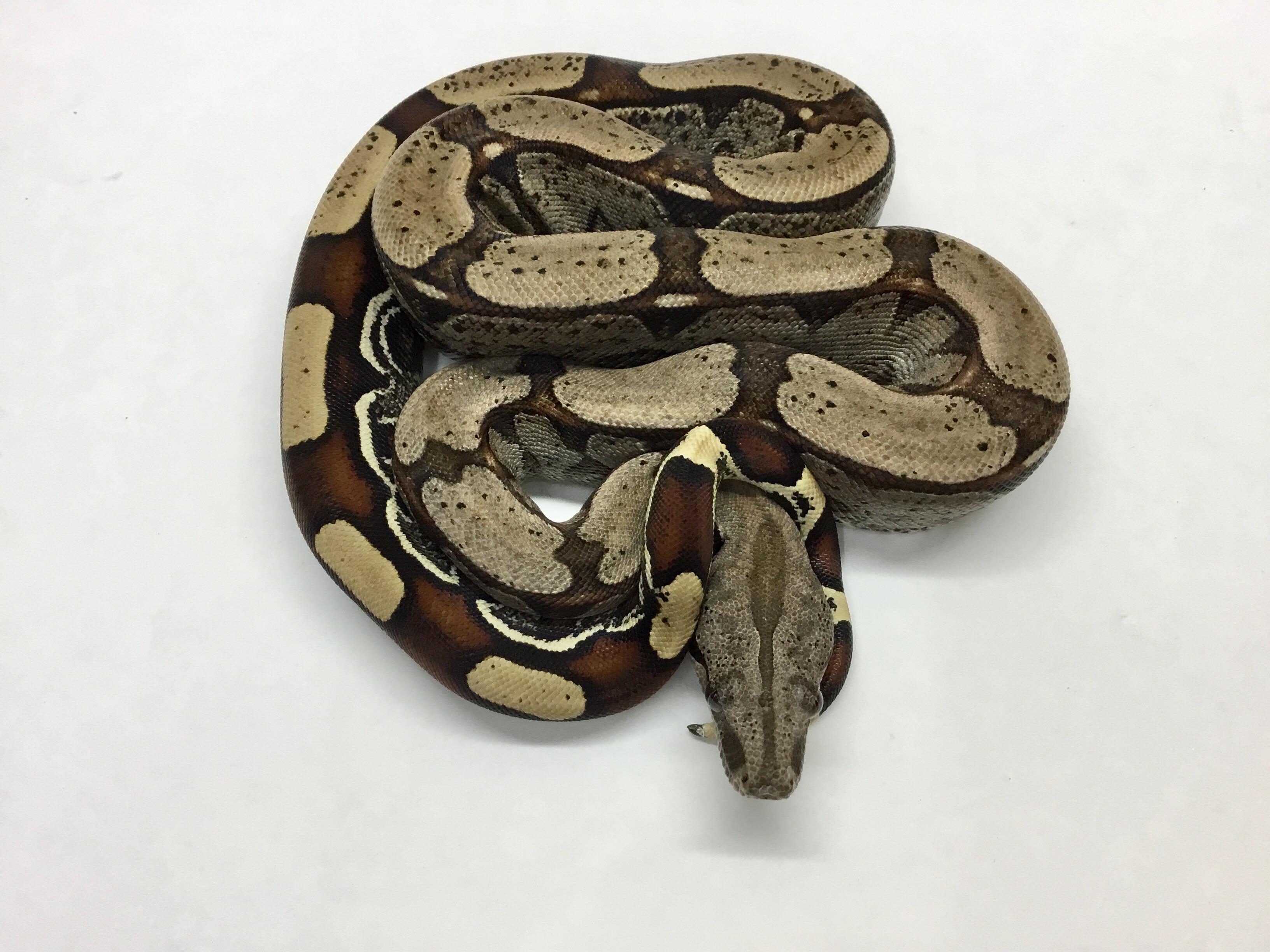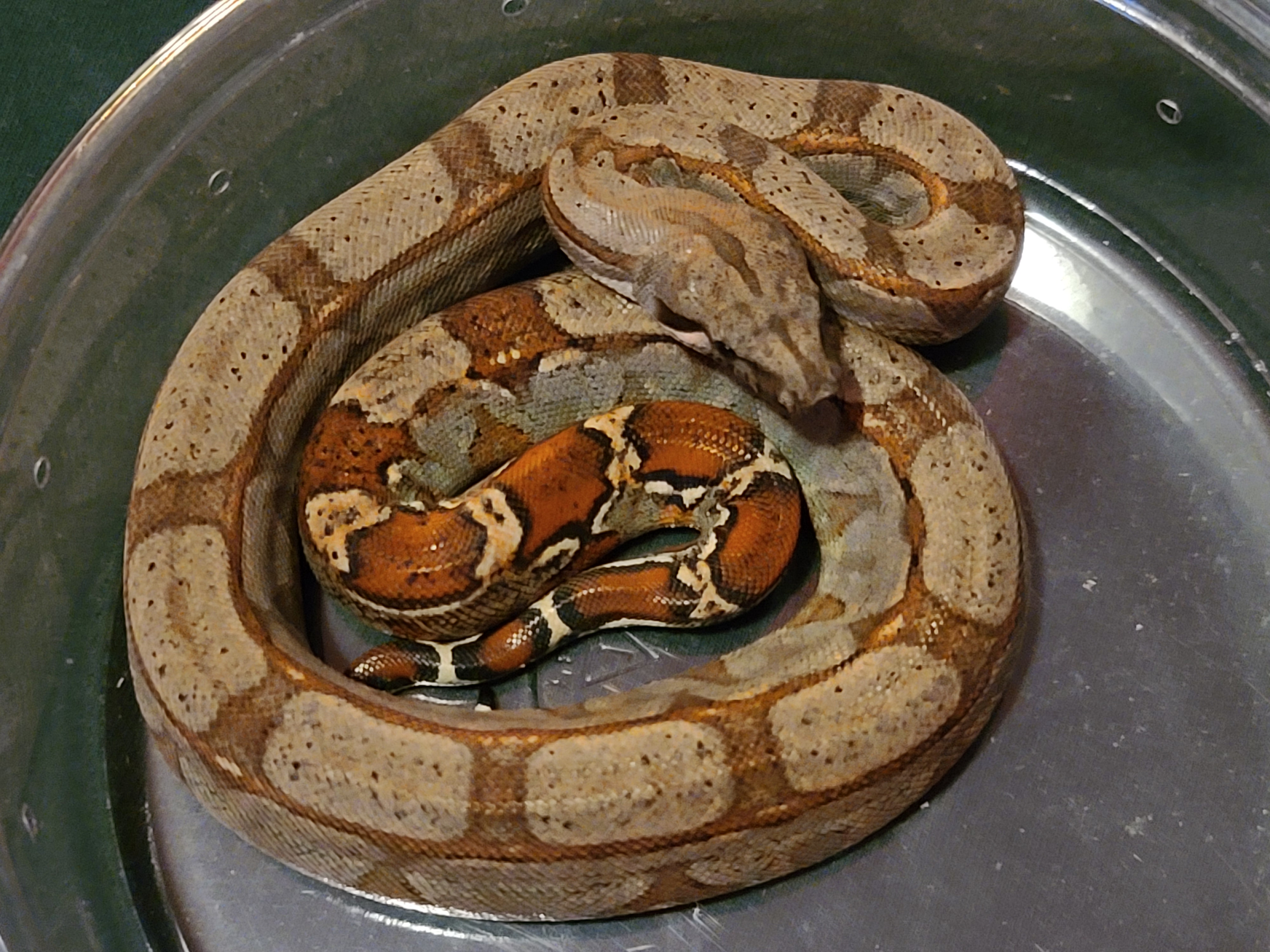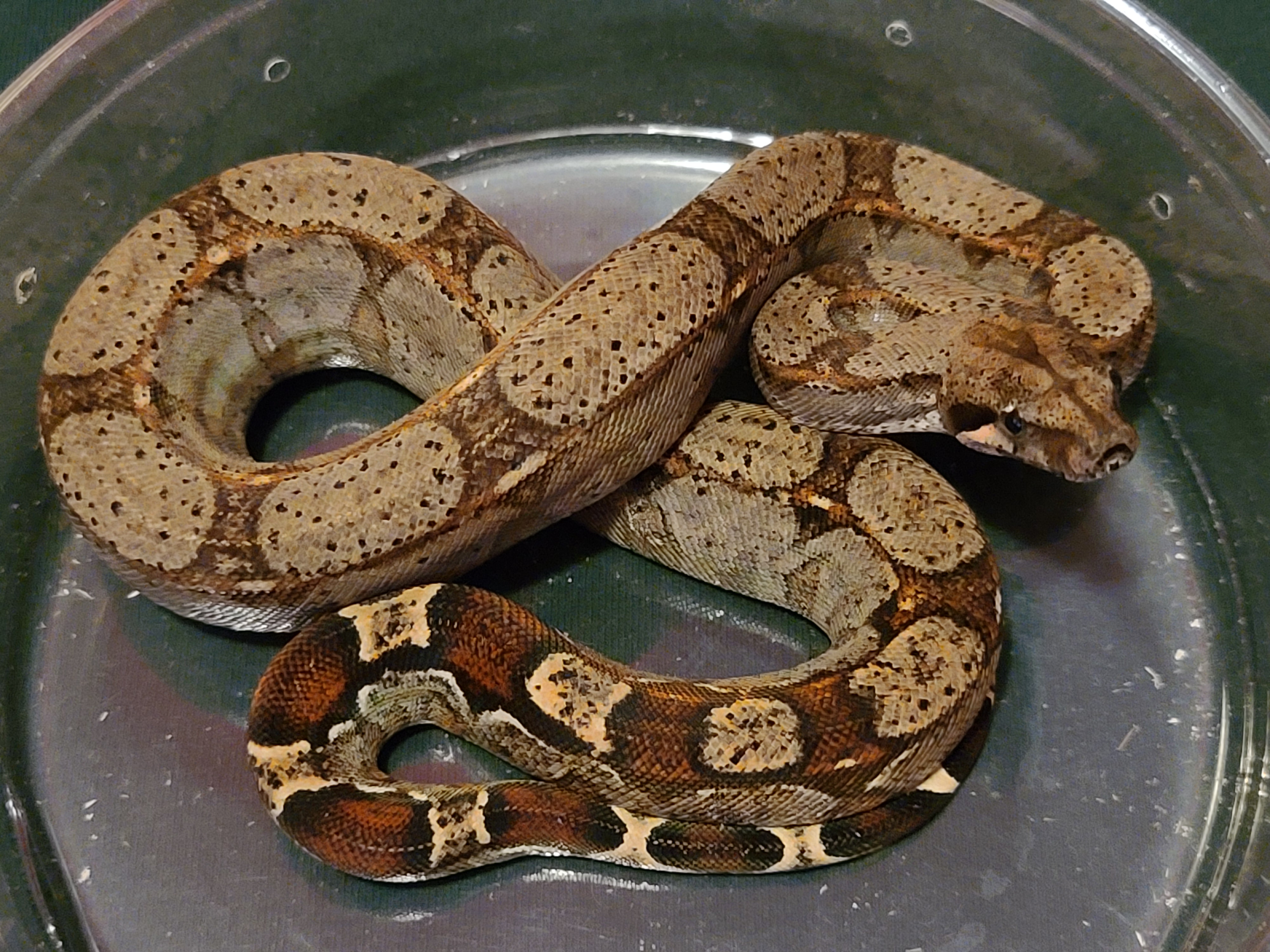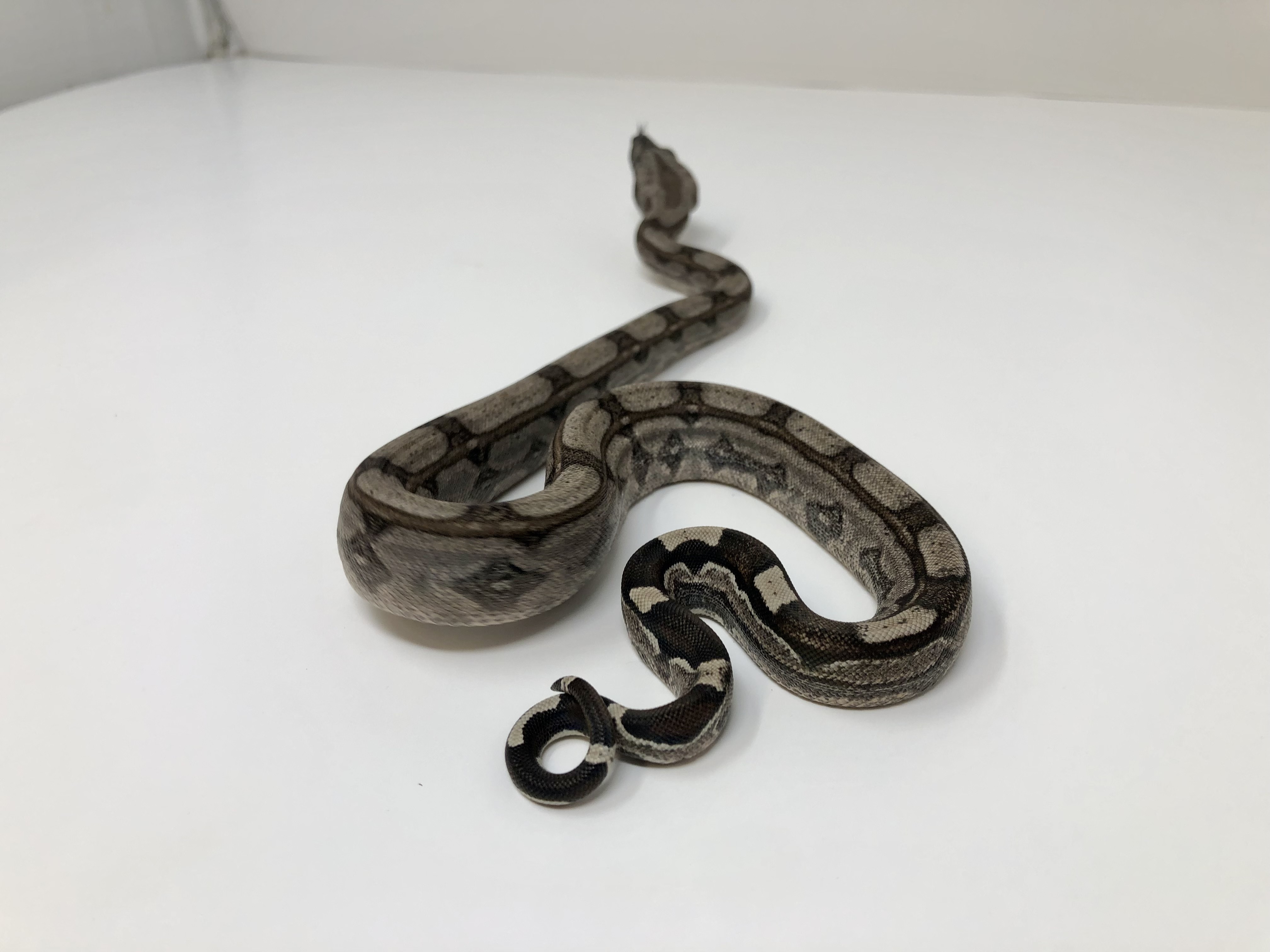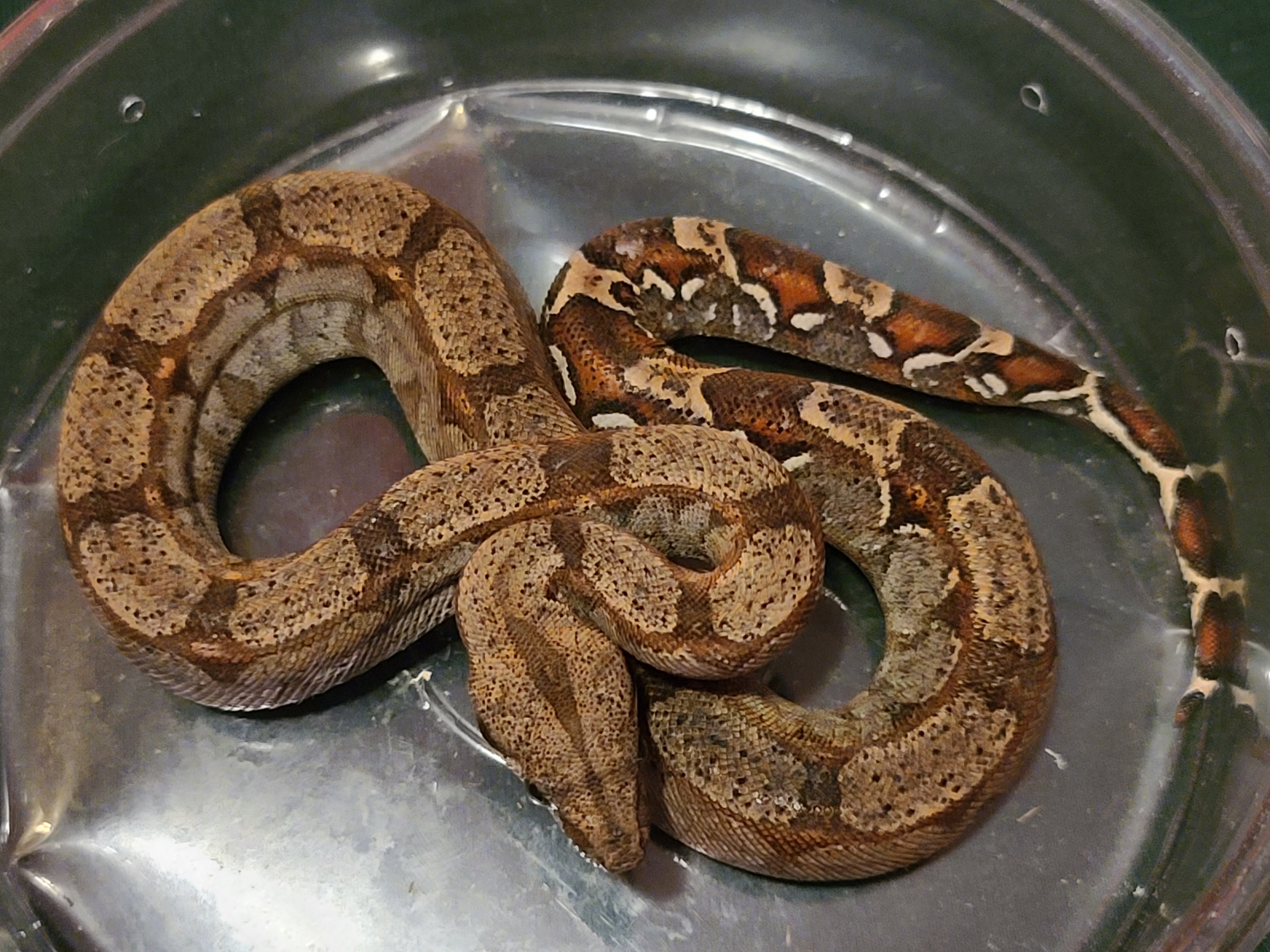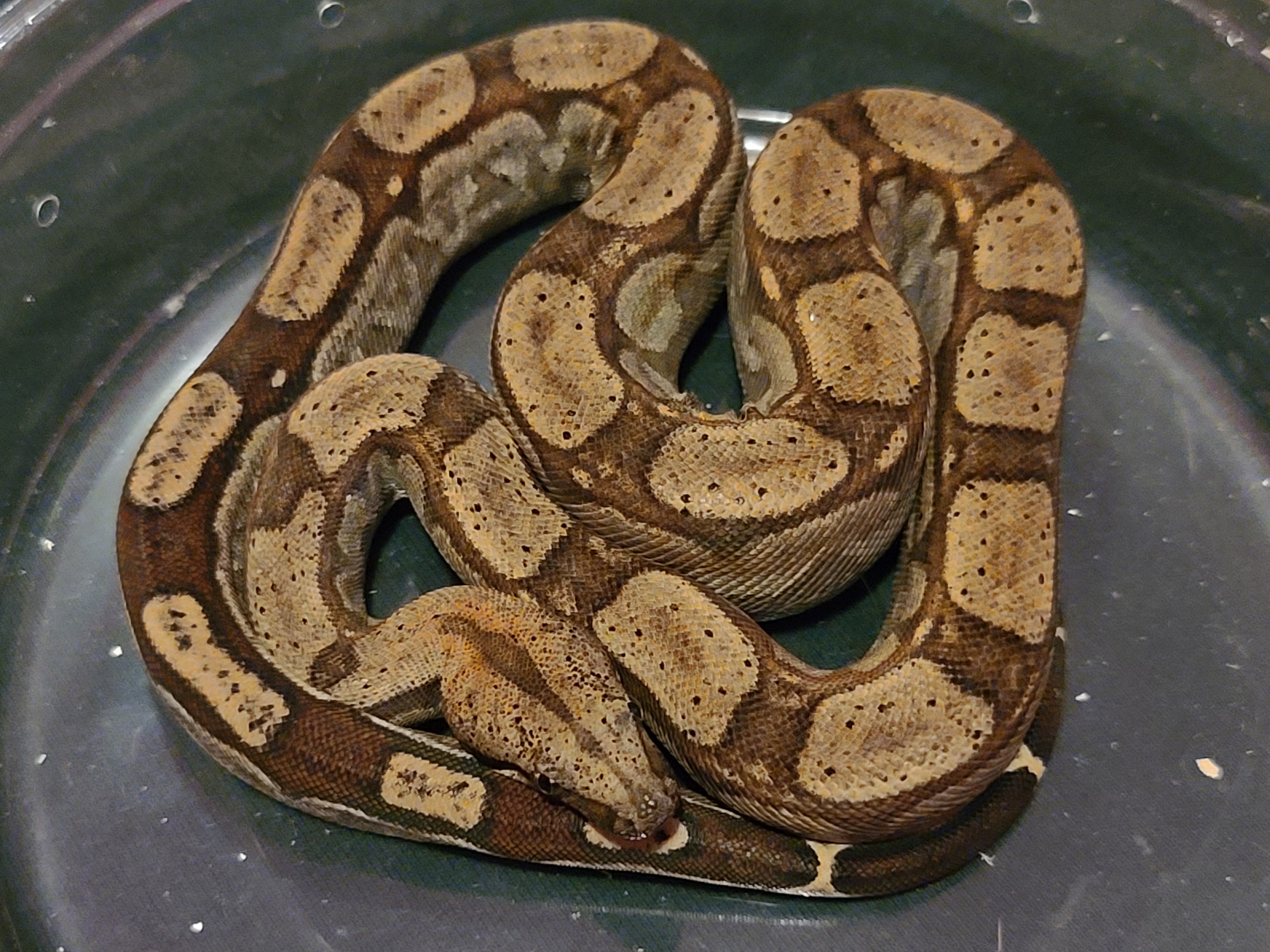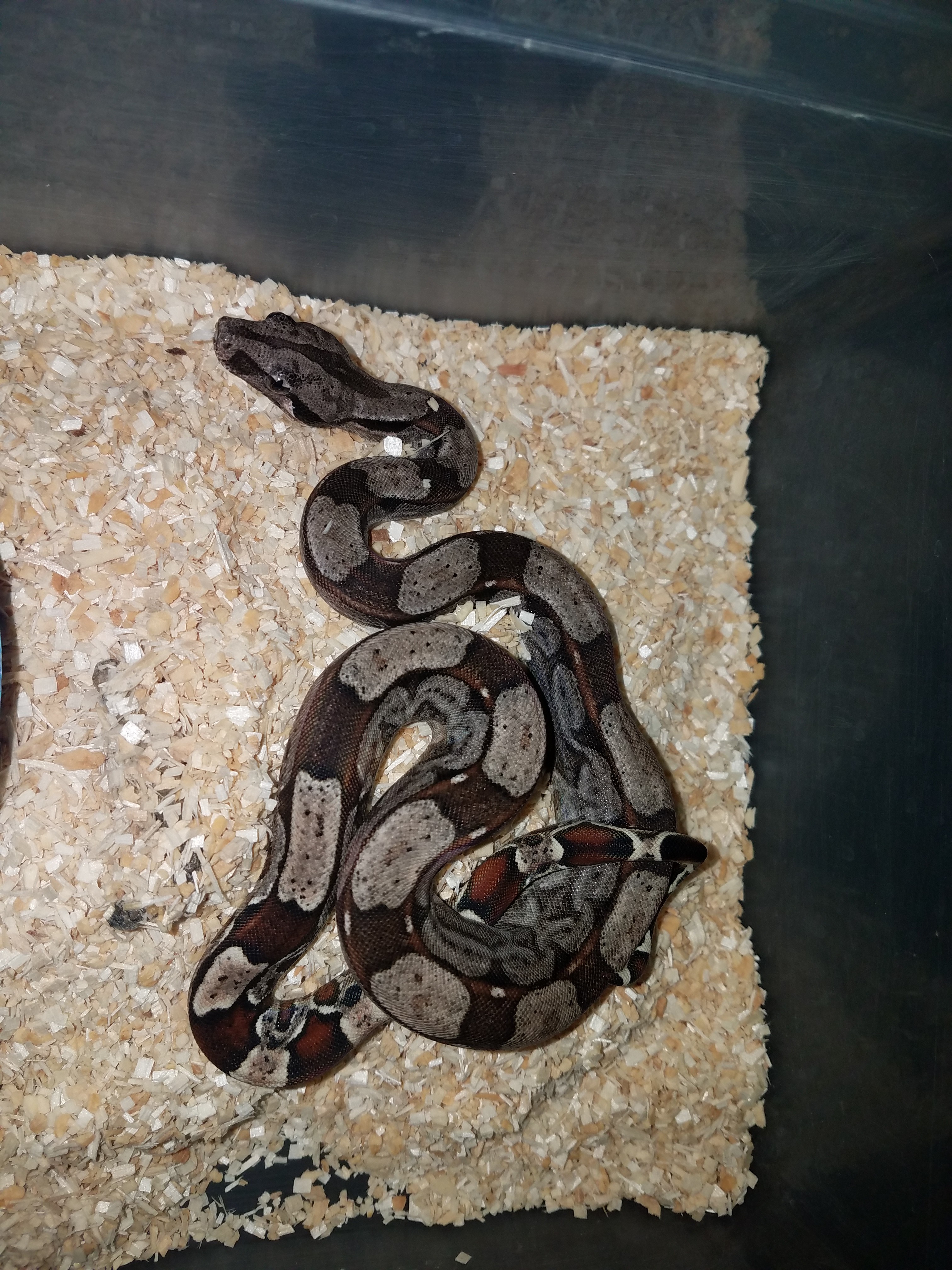Roswell Laddertail
Type: Incomplete Dominant
First Produced By: Todd Smith
Aliases: RLT, Roswell
Issues: Unusually High Death Rate At Birth
First Produced In: 2003
Availability: Rarest
Last Updated: 2022-02-15
Do you have any suggestions or corrections for this article?
Click here to contribute feedback
Issues
History
Todd Smith produced the original Roswell Laddertail (RLT) litter in 2003. They were not called RLTs by Todd at that time because neither he nor anyone else knew that there was more going on there than just a ladder tail. Heather Martin’s 2007 breeding of siblings from Todd’s litter produced the first Super (homozygous) version that Heather named the Roswell Boa; the heterozygous form with connected patterns and ladder tails later came to be called Roswell Laddertails, or RLTs. Todd’s original 2003 litter resulted from breeding a Kahl Albino to a wild-caught import pure Bcc (Suriname) with a nice connected pattern and ladder tail (it turns out that she was the matriarch RLT). As a result, all of the original RLT stock from that 2003 litter were het-Kahl Albino, and all Roswells/RLTs that were produced later started out as at least 66% possible het-Kahl Albinos.
In 2010 we acquired several RLTs from Jason Gonzalez, one of which was a male RLT 66% possible het Kahl-strain Albino that Heather Martin had produced in her first Roswell/RLT litter in 2007. Jason had bred this particular male to a Kahl double-het Sunglow female (Hypo het-Kahl Albino), and produced a litter of 10 babies, none of which was Albino. This result, of course, immediately had us very interested in this boa. With that breeding of het-Albino X possible het-Albino, if the male possible het-Albino actually was het-Albino, the probability of getting zero Albinos (k=0) in 10 babies (n=10) was 0.056, or 5.6%; or to phrase it another way, the probability of this male RLT not being het-Kahl Albino based on this litter outcome was about 94.4%. We did not feel that this probability was sufficient to comfortably decide that he was not het-Kahl Albino, and so we decided to conduct further breeding trials with this male and another het-Kahl Albino female here at BoaMorph.
In 2012, we succeeded in breeding him to a proven het-Kahl Albino female we had raised here from one of our many Groovy Coral Albino litters, resulting in a litter of 13 babies, again with no Albinos. In total this male RLT 66% possible het-Kahl Albino had successfully bred two females that were het-Kahl Albino (q = ¾), and produced 23 babies (n = 23) with no albinos (k = 0). If this male was het-Kahl Albino, the probability of this outcome would be only P23(k=0) = (¾)23 = 0.0013 or 0.13%, equivalent to 13 in 10,000 or just a bit over 1 in 1,000.
Finally The Result We Were Looking For!
With these results, we were able to conclude that this male RLT was not het-Kahl Albino at a probability (or certainty) of about 99.87%. We decided that we were sufficiently confident in these results to allow us to do what we had long been wanting to do: breed an RLT to a Sharp albino! This opened up a whole new world of possibilities for Roswell/RLT breeding, and the knowledge of probability and statistics that we have shared here is what allowed us to do it while minimizing the risk of mixing Kahl-strain and Sharp-strain Albino genes which could have produced undesirable mystery boas down the road.[1]
Appearance
Tail
As the name suggests, RLT appears as a ladder-like drawing in the animals’ tails. In addition, the saddle spots are also connected by fine lines. [2]
Proven Lines
No known proven lines
Related Traits
No known related traits
Combos
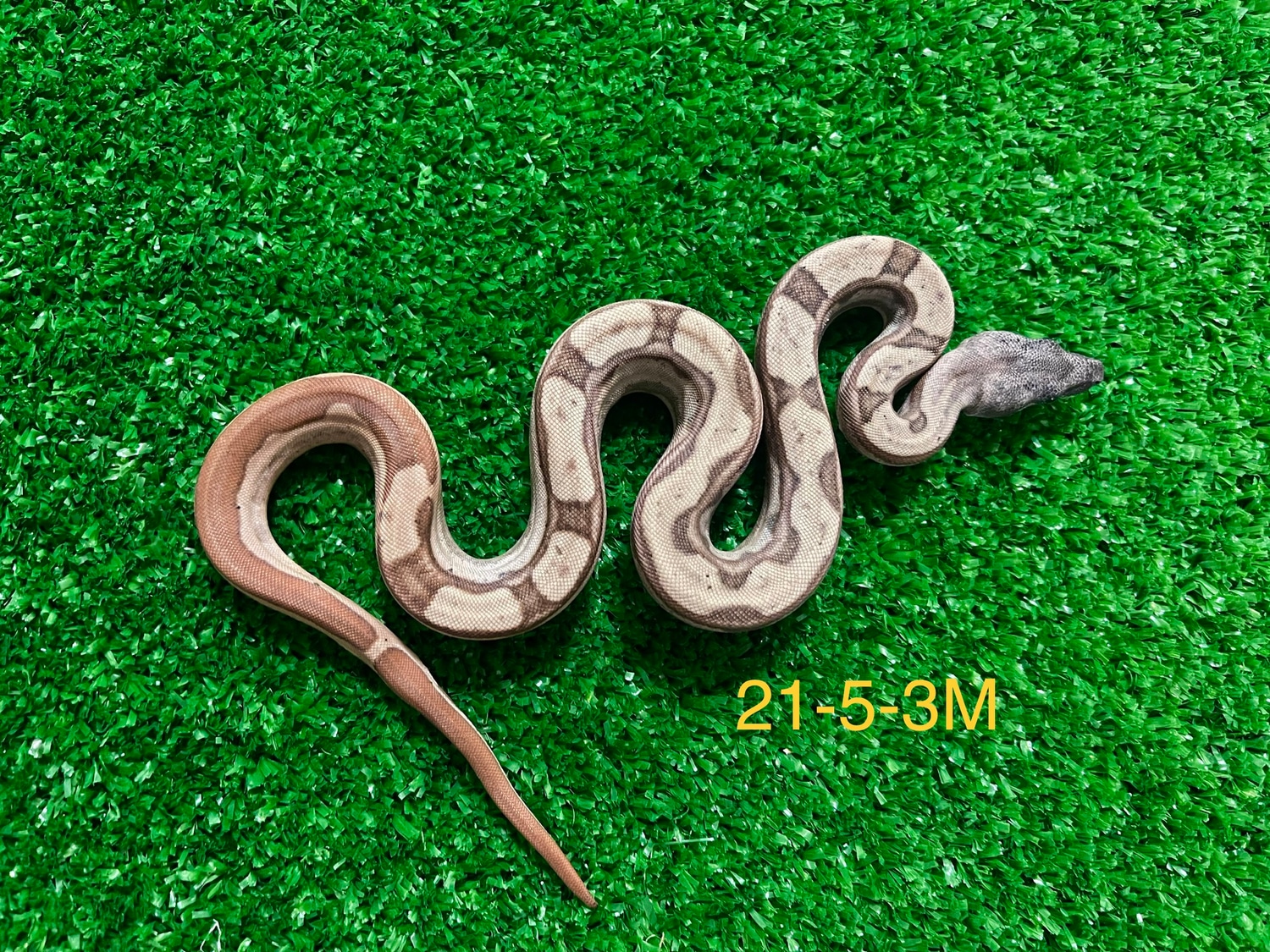
Hypo RLT Harlequin Motley 66% Het Kahl 50% Het Anery (1st Combo Like This Ever Made) Boa Constrictor by S&M Boas
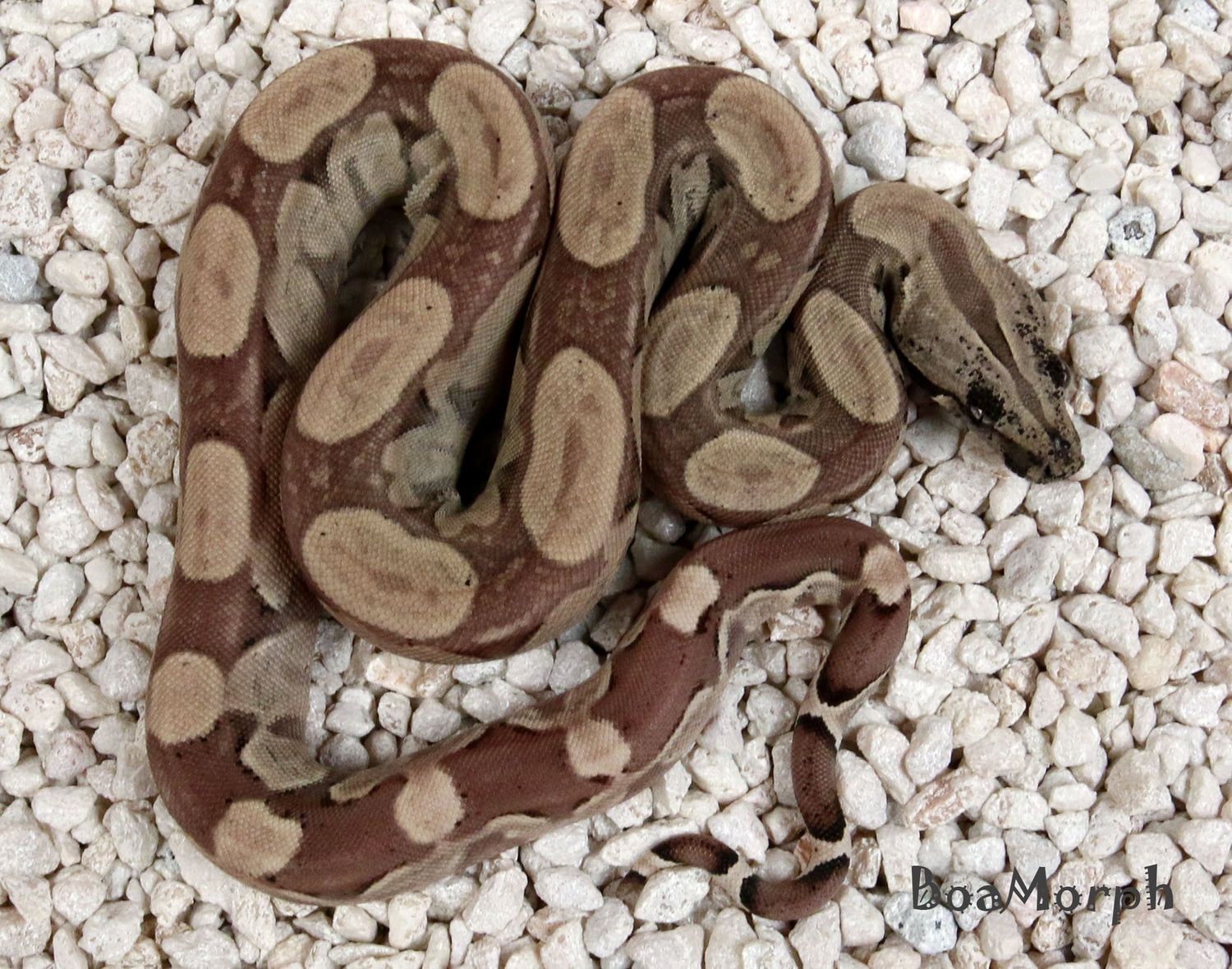
IMG RLT Ghost ParaHet, Poss Super Hypo Boa Constrictor by BoaMorph
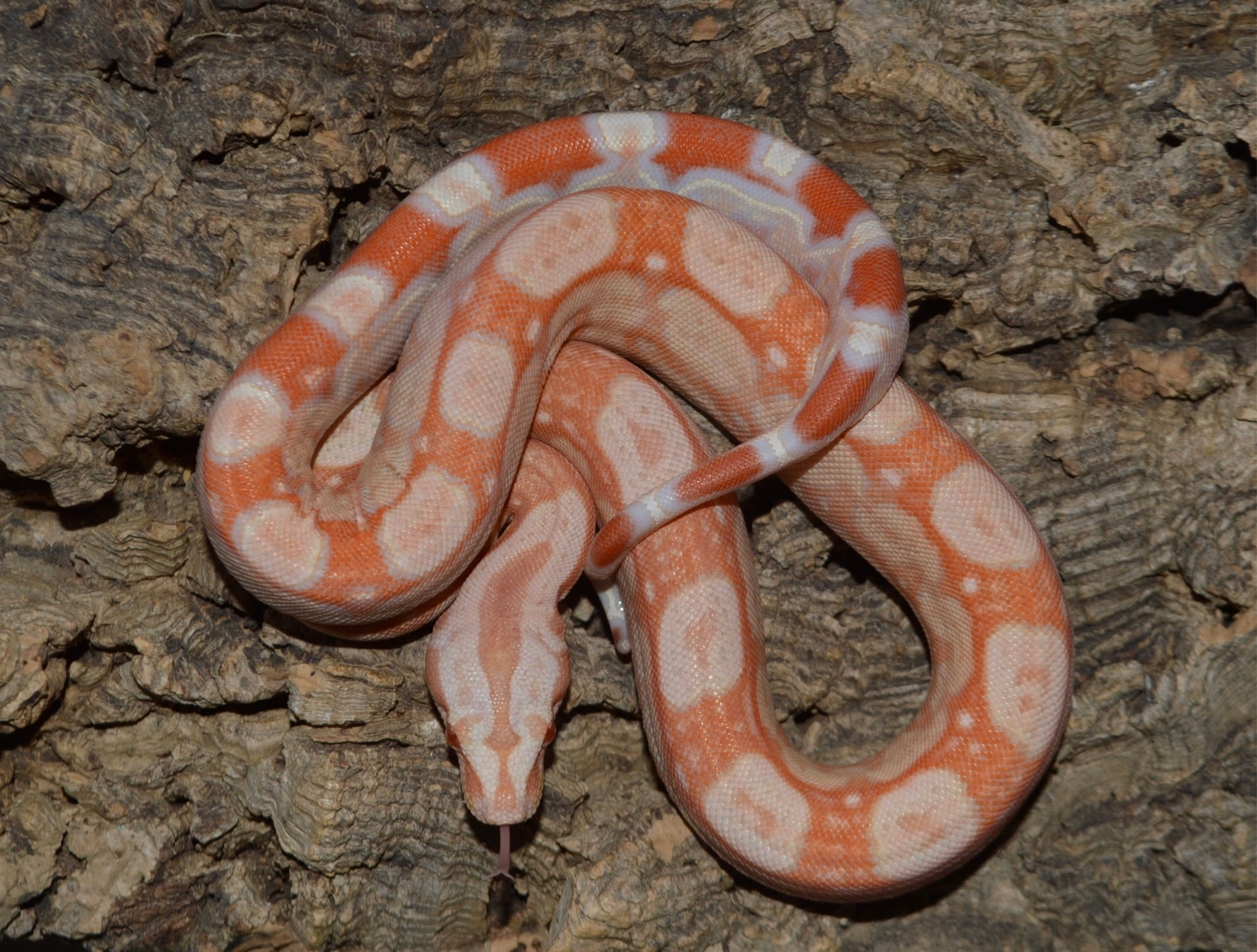
IMG RLT Albino(Kahl) Het BEA Boa Constrictor by Hardknock Herpetolculture

Albino Roswell Dh Snow Boa Constrictor by LowKeyBoas
